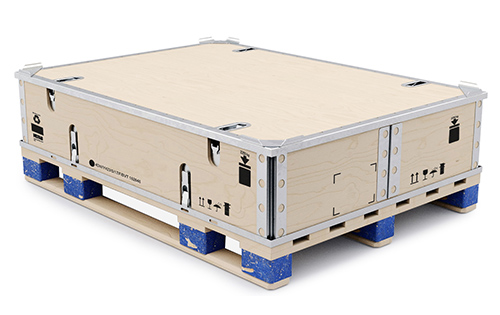Streamlining Procedures: The Power of a Trusted Processing Company
Streamlining Procedures: The Power of a Trusted Processing Company
Blog Article
Effective Industrial Recycling Solutions for Sustainable Product Packaging: A Comprehensive Guide
That's where this extensive overview on efficient industrial recycling options for sustainable product packaging comes in. By checking out vital locations such as product packaging product choice, designing for recyclability, applying reusing facilities, working together with reusing partners, and tracking and determining recycling success, this overview will equip you with the understanding and tools necessary to make enlightened decisions and drive favorable modification within your organization. Whether you're a packaging expert, sustainability manager, or simply interested in the topic, this overview will certainly give valuable understandings and strategies to help you navigate the globe of lasting product packaging.
Product Packaging Product Choice
The choice of packaging products plays an important role in guaranteeing the sustainability of industrial reusing services. The selection of products is crucial in lessening ecological influence and taking full advantage of reusing efficiency when it comes to lasting product packaging. Choosing the ideal products can help in reducing waste generation, preserve resources, and promote a round economy.
Products like cardboard, paper, glass, and certain types of plastics can be reused numerous times without losing their high quality. On the various other hand, products that are tough to reuse, such as blended plastics or non-recyclable compounds, can create difficulties for the reusing process and might finish up in burners or land fills.
An additional consideration is the use of renewable and eco-friendly products. Product packaging made from renewable energies, such as plant-based plastics or biopolymers, can help in reducing reliance on fossil fuels and minimize environment modification. Furthermore, eco-friendly materials break down normally over time, minimizing the accumulation of waste in landfills.
Additionally, the weight and volume of packaging products must be decreased to reduce transport prices and power consumption. Lightweight products not only need fewer resources during manufacturing yet also add to reduce carbon emissions during transportation.
Designing for Recyclability
In order to ensure the recyclability of packaging materials, thoughtful design is essential. Designing for recyclability includes developing product packaging that can be conveniently arranged, divided, and processed in reusing centers. One crucial aspect of making for recyclability is the choice of materials. Product packaging designers need to focus on using products that are extensively approved for reusing and have established recycling frameworks. Products such as glass, aluminum, and certain kinds of plastic, like pet dog and HDPE, are generally recycled and must be favored over materials that are expensive or tough to recycle.
An additional important consideration in developing for recyclability is the removal of unneeded elements or materials. By decreasing the variety of layers, coverings, and extra parts, product packaging can be made simpler and less complicated to reuse. In addition, designers should intend to minimize using mixed materials, as they can complicate the recycling process.

Implementing Recycling Infrastructure
Reliable application of reusing framework is vital for the success of commercial reusing services. Without proper framework in area, the reusing process ends up being inefficient and inadequate, preventing the overall objective of lasting product packaging.
To execute recycling infrastructure successfully, several vital aspects need to be considered. There must be a well-organized collection system that helps with the separation and collection of recyclable materials. This can consist of designated recycling containers in public areas, as well as partnerships with waste management firms for curbside pickup and sorting.
When collected, the recyclable materials need to be carried to reusing facilities in a timely way. This needs efficient logistics and transport networks, making certain that the products reach the suitable centers immediately.
At the recycling facilities, progressed sorting and processing modern technologies ought to remain in area to separate various kinds of products efficiently. This consists of using automated arranging makers, optical scanners, and hands-on sorting strategies.
Moreover, there should be a robust market demand for recycled products. This can be accomplished through partnerships with manufacturers and sectors that use recycled materials in their production processes. Producing a steady market for recycled materials incentivizes the reusing market and advertises the round economic climate.
Teaming Up With Recycling Allies

One key element of collaborating with recycling companions is the establishment of clear interaction channels. It is essential to develop open lines of communication to assist in the exchange of info, updates, and feedback. This permits both parties to remain educated concerning the progress of reusing campaigns and deal with any challenges or issues that might develop.
In addition, cooperation can include joint initiatives in applying and developing reusing programs. Recycling companions can provide valuable understandings and guidance in developing effective collection systems and establishing the most suitable recycling technologies. By collaborating, services and recycling partners can maximize the reusing procedure and reduce waste.
Moreover, partnership can expand past the functional elements of recycling. It can additionally incorporate advocacy and education and learning campaigns. By joining forces, organizations and reusing partners can raise awareness about the value of recycling and promote the adoption of sustainable packaging methods amongst consumers and other stakeholders.
Monitoring and Measuring Recycling Success
To ensure the performance of industrial reusing remedies and the success of sustainable packaging objectives, it is crucial for companies and their reusing companions to develop a comprehensive system for monitoring and gauging reusing success (processing company). Tracking and determining reusing success allows businesses to examine the impact of their recycling initiatives, recognize areas for renovation, and set meaningful targets for future development
One method to track reusing success is through the usage of information collection and evaluation tools. By accumulating information on the amount of product packaging waste created, the percentage of waste that is recycled, and the sorts of materials being reused, businesses can get useful understandings into their recycling performance. This data can after that be analyzed to recognize patterns, patterns, and locations of inadequacy.
One more important element of monitoring and determining recycling success is establishing clear and standard metrics. This permits businesses to compare Resources their performance versus industry standards and track their development gradually. Metrics such as reusing prices, waste diversion rates, and greenhouse gas discharges can give a measurable step of a business's reusing success.

Final Thought
In conclusion, executing reliable industrial recycling solutions for sustainable product packaging requires cautious factor to consider of product packaging product choice, designing for recyclability, carrying out reusing infrastructure, working together with reusing partners, and monitoring and measuring recycling success. By integrating these methods, organizations can add to an extra sustainable and environmentally-friendly method to packaging, reducing waste and promoting the circular economy.
By discovering vital areas such as product packaging product choice, developing for recyclability, applying reusing infrastructure, working together with reusing companions, and tracking and measuring reusing success, this guide will certainly equip you with the understanding and devices article required to make educated decisions and drive positive change within your organization. Packaging developers need to prioritize the usage of materials that are widely accepted for reusing and have actually developed recycling facilities.Cooperation with recycling partners is vital for the successful execution of industrial recycling solutions and the achievement of sustainable packaging goals. By joining forces, companies and reusing partners can raise understanding concerning the significance of recycling and promote the adoption of sustainable product packaging practices among consumers and other stakeholders.
By accumulating data on the amount of packaging waste generated, the percent of waste that is reused, and the kinds of materials being recycled, businesses can acquire valuable understandings into their reusing performance.
Report this page